With NYPD Stop and Frisk Case at Crossroads, Civil Rights Groups Demand Monitoring Reforms
Thousands of demonstrators march down Fifth Avenue in New York protesting the NYPD policy of stop and frisk. – New York NY/USA-June 17, 2012 (Shutterstock)
By Greg B. Smith, THE CITY
More than eight years ago, then-Manhattan U.S. District Court Judge Shira Scheindlin issued a landmark order ruling that the NYPD was routinely violating the civil rights of Black and Hispanic New Yorkers through its institutionalized overuse of stopping and frisking citizens for no apparent reason other than their race or ethnicity.
Three mayors and five police commissioners later, Scheindlin — now an attorney in private practice — is confounded that her reform order is still an ongoing affair, with a new federal monitor recently appointed to replace the one she named in 2014 and no end in sight to the rollout of reforms she’d hoped would be in place by now.
“I had not envisioned that the monitorship would last seven and a half years. I had not anticipated that,” she told THE CITY last week, calling it “much longer than I would have ever envisioned. Some of these monitorships can go on forever.”
All these years after her ruling established a blueprint for reform, the plaintiffs have requested a modification, while keeping the monitor in place. They say that the Black and Hispanic communities most affected by abuse of this law enforcement tactic have been kept out of the reform process.
And they contend that the NYPD has an ongoing problem getting cops to file the required reports when they make a stop — citing data the federal monitor highlighted that indicates more than one third of all stops have not been properly reported in recent years.
Into this scenario steps a new monitor, Mylan Denerstein, a former federal prosecutor and ex-aide to former Gov. Andrew Cuomo who is now in private practice at Gibson Dunn.
She was appointed last month following the November death of Peter Zimroth, the previous monitor, and has so far attended one meeting with the many parties in the case. She has also begun a series of one-on-one sit-downs with them to get acquainted with the landscape, according to participants in the meetings who spoke to the THE CITY.
“This is a critical moment in the litigation and the new monitor really has to step up and understand the issues about community involvement and transparency and encourage the NYPD to do both,” said Jonathan Moore, a veteran civil rights attorney representing plaintiffs in the case. “At this point [the NYPD and city] are tired of us. They don’t want us to be around anymore.”
Communities Unplugged
Denerstein declined to be interviewed by THE CITY but released a brief statement about her new mission: “I am truly honored to continue the work of the independent NYPD Monitor. Throughout my legal career I’ve always viewed the law as a vehicle for both fairness and justice. I very much look forward to working collaboratively with all of the parties to continue this important work.”
She arrives just as lawyers for the plaintiffs — several Black and Hispanic New Yorkers who were stopped by police without legal justification — have asked the judge now overseeing the case, Analisa Torres, to “establish new norms” in the case going forward.
The team of attorneys including Moore, the Center for Constitutional Rights, the Legal Aid Society, the Bronx Defenders, NAACP Legal Defense Fund, New York Civil Liberties Union and the Latino Justice coalition contend that over the many years of monitorship, not enough effort was made toward community involvement. In a December letter to Torres, they demanded a new push for “robust community engagement as well as inquiry into and consideration of the experiences of Black and Latinx New Yorkers from heavily policed communities.”
Corey Stoughton, an attorney with Legal Aid litigating the part of the suit addressing stop-and-frisk abuse in NYCHA developments, said a lack of engagement has been of concern throughout the monitorship.
“There have been longstanding concerns about this monitorship, that it’s not engaging with the communities that were impacted and are impacted by the issues of stop and frisk,” she said. “It’s been a closed-door process and there’s not a lot of awareness among New Yorkers that this reform is underway. This has posed a real challenge to the legitimacy of this whole process and the ability to produce lasting, meaningful change.”
Seeking Decoys
In speaking with THE CITY, Scheindlin — who is now with the firm Stroock & Stroock & Lavan — made clear she was not second-guessing either the monitor or judge in the case, but she noted that the type of community engagement the plaintiffs are seeking was foundational to her original ruling.
“I had hoped for much more interaction with the community and those people who live in those areas most affected by this,” she said. “I would hope that they were very involved and their concerns would be heard.”
As part of their motion to modify the order, the plaintiffs want the judge to approve hiring an “independent researcher” picked by a seven-member panel of community representatives appointed by the court to conduct annual surveys of Black and Hispanic community at the precinct level. The panel would assess “public perception” about whether police stops as currently practiced are justified and if they’re happening in a racially biased manner.
That same motion filed in July also requests testers posing as citizens who would engage in “pre-scripted non-violent ‘suspicious behavior’” to see what happens if they’re stopped and questioned.
The plaintiffs’ lawyers say they made this request to address another issue they see as crucial: whether cops are significantly underreporting stops.
A timeline analysis by the NYCLU shows that the number of reported stops peaked in 2011 under then-Mayor Michael Bloomberg and then Police Commissioner Ray Kelly at 685,000 and began dropping before Scheindlin issued her August 2013 order. Since then the numbers plummeted, bottoming out in 2018 at 11,000.
They rose slightly in 2019, the last full year of data available, to 13,400, but the plaintiffs in the case do not believe those statistics tell the full story. And their doubts are partly based on the NYPD’s own data.
In tracking reported stops, the department has found multiple instances where body camera footage depicts a stop that was not reported. Police officials concede that often with arrests, cops assume they only need to fill out an report and that a stop report is unnecessary. In fact, it is still required.
The monitor has repeatedly noted this problem, citing internal NYPD Quality Assurance Division reports that found 36% of the stops made by cops in 2018 and 2019 were not reported. And they cite a random sampling of the department’s body camera pilot program in 2017 that estimated cops wearing cameras filed 39% more stop reports than cops in the control group who were camera-less.
“There is substantial evidence suggesting that many NYPD officers did not submit reports documenting all of their stops of civilians in years 2016 to 2019,” Zimroth, the previous monitor, wrote in a September 2021 report two months before he died. “One cannot rely only on reported stops, given the likelihood of significant numbers of unreported stops, and that racial disparities may still be occurring if undocumented stops are taken into account.”
City Hall Pushes Back
In court papers filed last fall, the city Department of Law labeled the requested modifications “onerous, overbroad” and require a “significant new outlay of city financial resources to implement.” They argued that numerous avenues already exist for community involvement, and that the department’s method of tracking stops is a “reliable, frequently used compliance metric.”
City lawyers noted that the monitor and the NYPD “have already identified underreporting of stops as a key issue” and have initiated a new review process to address the problem. Regarding the request for “integrity testing,” they contended this approach would be all but impossible.
“Between the difficulty of having an officer be the test subject and having the test subject act “suspicious” enough to cause an officer to approach without actually or apparently committing an offense, the rate at which officers stop any citizens is likely to be quite low, if not impossible,” they wrote.
Plaintiffs’ lawyer Moore contends that while the monitor repeatedly cited the issue of underreporting and the NYPD has acknowledged it’s an issue, little has been done to get the NYPD to do something about it.
“The NYPD has it’s head in the sand in terms of trying to deal with that issue. They don’t see it as a problem. It is a problem. We don’t really have a good idea of how many stops they’re doing,” he said.
And as Scheindlin pointed out, the monitor has the option of getting the judge to intervene.
“The real problem is not the order. It is the implementation and enforcement of the order,” she said.
‘Police Officers Make Mistakes’
Speaking with THE CITY last week, Matthew Pontillo, chief of the NYPD’s risk management division, defended the department, insisting that underreporting of stops is relatively limited in scope.
He pointed to the Quality Assurance Division’s regular audits of police stop reporting and said the most recent audits through last year — which have yet to be made public — indicate a 90% level of compliance.
He also said the department uses those audits to confront cops who aren’t in compliance. A first-time failure to report a stop triggers additional training, with repeat offenders facing potential sanctions and/or reassignments, according to Pontillo.
“Of course any deficiency is something that we want to prevent, but let’s recognize we’re talking about human beings. Police officers make mistakes. It’s not always intuitive,” he said. “The cop on patrol who’s looking at some street encounter to determine what it is does not have time for quiet deliberation and reflection. It’s a challenging environment for them.”
He noted that the body-camera report that found a higher rate of police stop reporting amongst cops wearing cameras relied on a small sampling from the 2017 pilot. He anticipates more recent data will show a broader portrait because since then cameras have been rolled out to all patrol officers and specialty teams such as Emergency Service Units that handle crisis situations and the Strategic Response Group that was involved in the 2020 police brutality protests.
“Pretty much everyone out there engaging with the public has cameras now,” he said.
With Torres now weighing the request to modify the order, some plaintiffs’ lawyers are concerned about some of Mayor Eric Adams’ plans for addressing a violent crime spike that has plagued the city in the last two years.
As of the end of last year, the number of shootings had more than doubled from 2019, while the number of homicides was up 51%, NYPD data show.
To combat gun crime, Adams has brought back the plainclothes anti-crime unit, which had been disbanded in 2020 by his predecessor, Bill de Blasio. The unit was criticized for involvement in a disproportionate number of civilian complaints and deadly police encounters, including a fatal 2018 interaction with Saheed Vassell in Brooklyn.
The cops shot and killed Vassell, a mentally ill man, in response to 911 callers who had mistakenly believed he was threatening people with a gun. The gun was actually a small piece of metal pipe.
In bringing back the unit, Adams promised members would be properly trained to better interact with the community and avoid unnecessarily escalating situations.
Stoughton of Legal Aid remains both skeptical and optimistic about Adams’ nuanced approach.
“We are concerned about the reinstitution of the anti-crime unit, but I also would note that when the mayor talks about that initiative, he’s committed to eradicating the issues of culture” that created problems, she said.
Stoughton is hopeful that the new monitor will take a different approach and be more transparent.
“She’s new and she’s leaning in and there’s an opportunity here for her to do things differently,” she said. “We have a new monitor and a new mayor. That means it’s an incredible opportunity for this police reform process,” she said.
This story was originally published on [February 7, 2022] by THE CITY.”

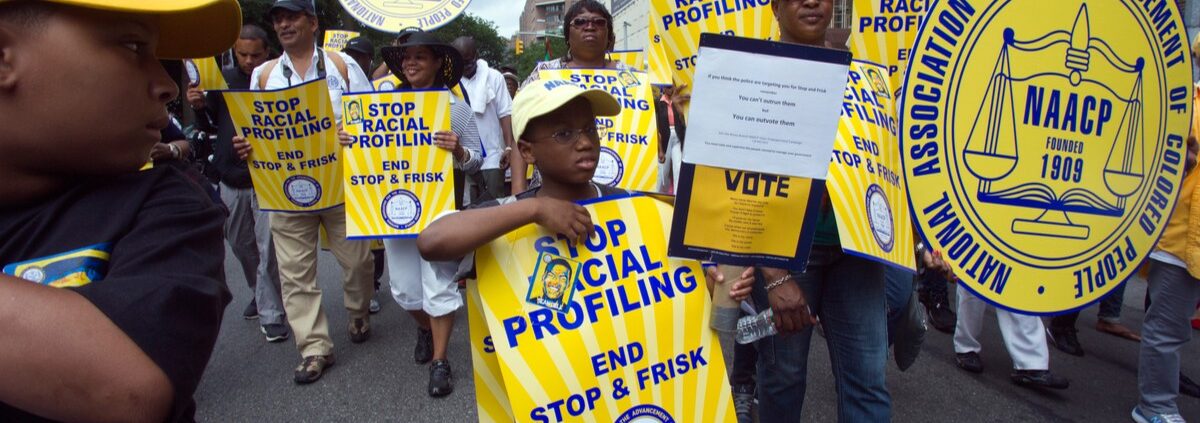
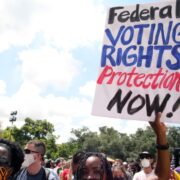

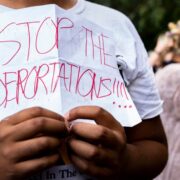



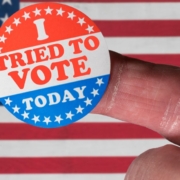
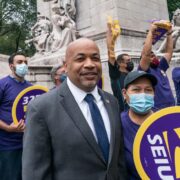


Leave a Reply
Want to join the discussion?Feel free to contribute!